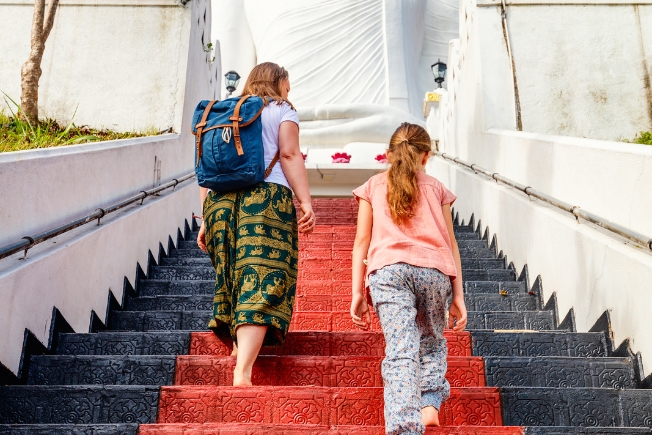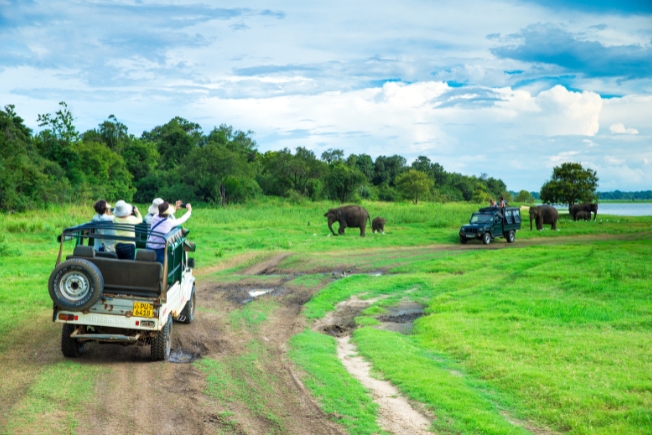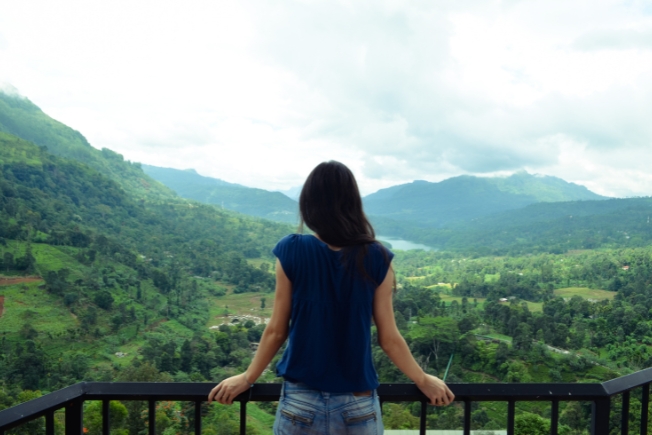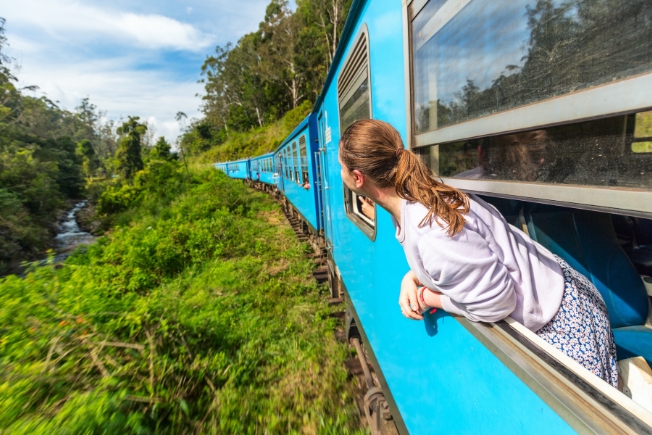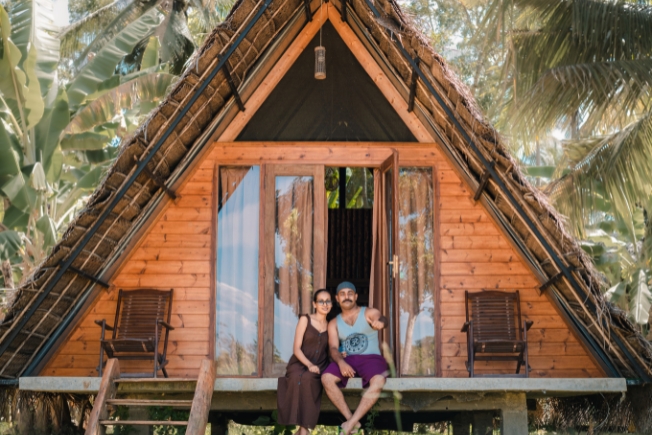This tropical haven is called the “Pearl of the Indian Ocean” for a reason. Take a trip through lush landscapes, golden beaches, and ancient ruins in Sri Lanka for an unforgettable holiday.
From tea plantations in the hill country to exotic wildlife and warm hospitality, the island offers so many memorable experiences for all kinds of travellers. So whether you seek adventure or a relaxing vacation, this tiny country promises a getaway rich in scenic beauty and mouth watering cuisine.
If you are a Dubai resident or citizen yearning for a serene escape from the hustle and bustle of life , we offer various Sri Lanka tour packages from Dubai. So read this guide before jetting off to understand the travel requirements, ideal times to visit, food, accommodation, and much more.
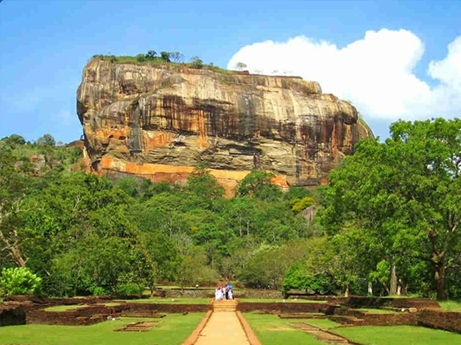

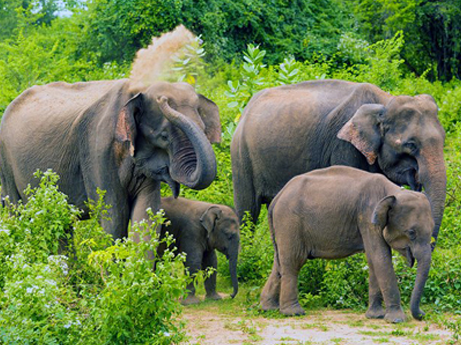

As a UAE national, you can easily travel to Sri Lanka from Dubai with a simple online visa application. This applies to most Dubai residents as well since they can apply for an Electronic Travel Authorization (ETA), which grants up to 30 days of stay.
Some UAE passport holders may be eligible for visa-free or visa-on-arrival entry, depending on diplomatic agreements. The process is straightforward: apply online, receive approval within a few days, and present the ETA at immigration. Make sure your passport is valid for at least six months before you apply and be up to date on the visa regulations. Therefore it is advisable to check the Sri Lankan immigration website or get the assistance of a trusted travel agency like Arooha.
This destination can be visited all year round as the ideal periods depend on the regions you are travelling to. If you are planning to lounge around the west and south coasts (including Colombo and Galle), the ideal time is from December to March. During this period the weather is sunny and dry.
For the east coast (like Trincomalee and Arugam Bay), May to September offers the best conditions, especially if you love surfing and beach activities. The central highlands, such as Nuwara Eliya and Kandy, are cooler and can be visited year-round, but it is best to avoid the monsoon season. If you want to experience cultural festivals the best time is between April to August.
This island is filled with a range of accommodation to cater to any traveller from extravagant hotels to charming guesthouses. So regardless of your budget, you are sure to find stays that suit your style in any part of the country.
For beach lovers, the southern coast towns like Mirissa, Unawatuna, and Bentota are perfect for relaxation and water activities. They have a wide selection of 5 star hotels such as Jetwing Saman Villa and Araliya Beach Hotel Unawatuna.
If you are a history buff or want to immerse yourself in their culture, try visiting ancient cities like Kandy, Anuradhapura or Sigiriya, which offer easy access to ancient temples and UNESCO heritage sites. Those who want to explore the scenic beauty of Sri Lanka can base themselves in opulent stays like Jetwing St Andrews Hotel in Nuwara Eliya for scenic views and peaceful retreats.
However, if your stay is short and you would like to tour the city there are a string of luxury hotels with gorgeous beach views from Shangri-la Colombo to the Taj Samudra.
This is a great country to try unique modes of travel like tuk tuks. Hiring ones to travel around the island has gained immense popularity and you can try it too. The other options are trains, buses, and private taxis. If you want to enjoy otherworldly scenic views, rail rides are a must, especially through the hill country. Hiring a driver is convenient for longer journeys or exploring multiple regions comfortably and efficiently.




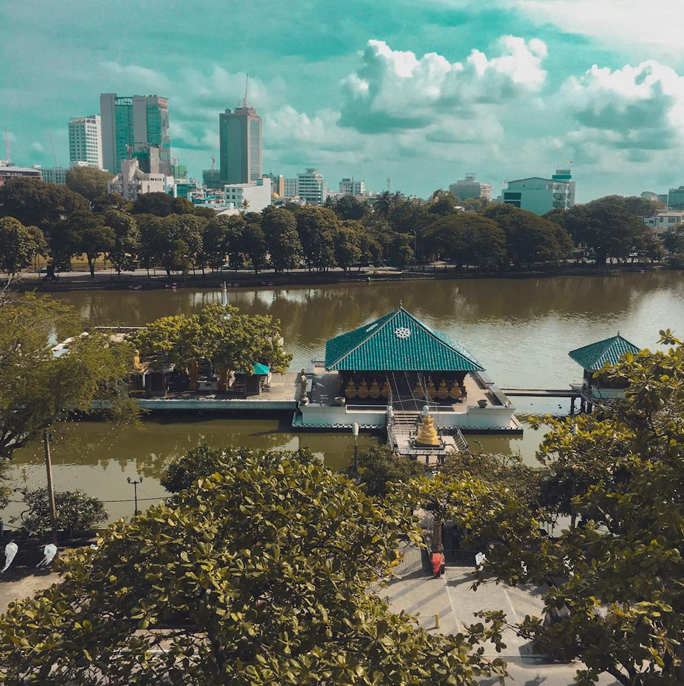
Colombo and Kandy offer contrasting yet complementary experiences during Sri Lanka travel from Dubai. Colombo, the vibrant capital, is a mix of modern life and colonial charm, with highlights like the Galle Face Green, Pettah Market, and Gangaramaya Temple. Enjoy fine dining, shopping, and seaside walks.
In contrast, Kandy, nestled in the hills, is a cultural gem home to the Temple of the Tooth Relic, a sacred Buddhist site. Surrounded by lush forests and a scenic lake, Kandy offers a more tranquil vibe. Together, these cities provide a perfect blend of history, spirituality, and urban exploration, making them must-visit destinations in Sri Lanka.
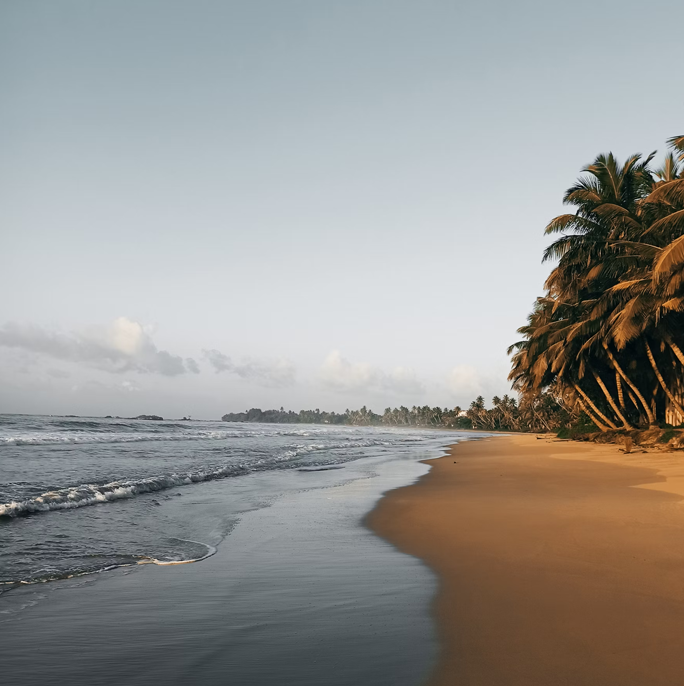
Sri Lanka’s stunning coastline promises endless beach adventures. The south coast is ideal for surfing, snorkeling, and whale watching, with popular spots like Mirissa, Weligama, and Hikkaduwa. For a more laid-back vibe, head to Unawatuna or Tangalle. On the east coast, Arugam Bay attracts surfers from around the world, while Pasikudah and Nilaveli offer calm, turquoise waters perfect for swimming and diving.
Whether you're sunbathing, enjoying fresh seafood, or embarking on a boat tour, Sri Lanka’s beaches cater to all moods. The warm tropical waters and golden sands make every coastal visit a memorable escape into island bliss.
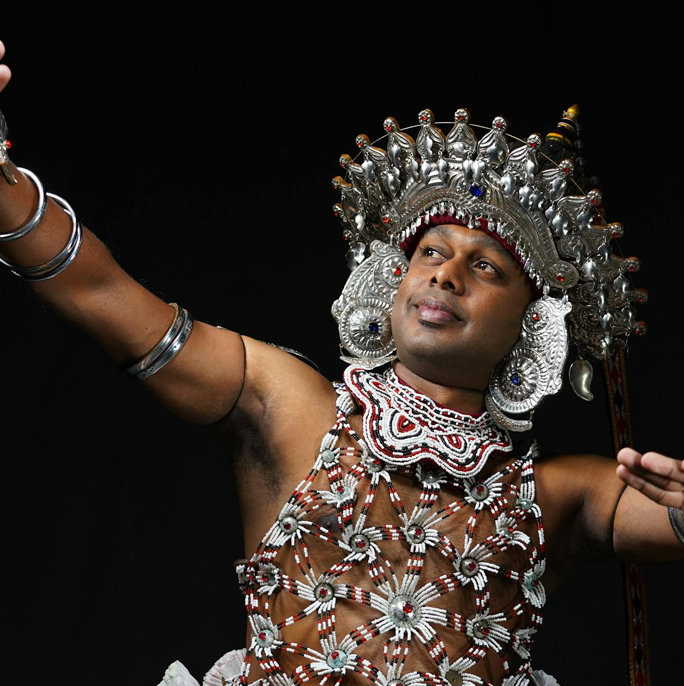
Sri Lankan cultural performances are rich in tradition and artistry. In Kandy, visitors can witness captivating Kandyan dance shows featuring rhythmic drumming, acrobatics, and vibrant costumes that tell stories from ancient folklore and mythology. These performances often accompany religious or royal ceremonies and reflect the island’s deep-rooted cultural identity.
Drummers, fire-walkers, and traditional mask dancers bring dramatic flair to local festivals and events. Some cultural centers across the country also offer daily shows for tourists. Attending a live performance is a great way to appreciate the island’s heritage and immerse yourself in its unique rhythm and vibrant expression of history.
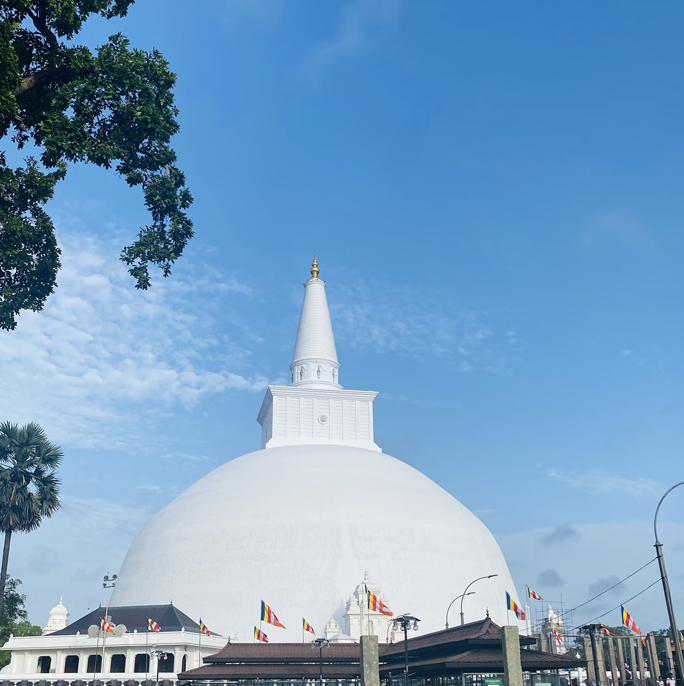
Sri Lanka’s Cultural Triangle is home to some of the country’s most treasured UNESCO World Heritage Sites. Explore the ancient city of Anuradhapura, with its sacred stupas and royal ruins, or climb the iconic Sigiriya Rock Fortress for panoramic views and ancient frescoes.
Polonnaruwa, another ancient capital, offers well-preserved temples, statues, and reservoirs.
The Dambulla Cave Temple, with its colorful Buddha statues and murals, is a spiritual marvel. Each site reveals a piece of Sri Lanka’s long and storied past, making the Cultural Triangle a must-visit for history lovers and anyone seeking a deeper connection to the island’s heritage.
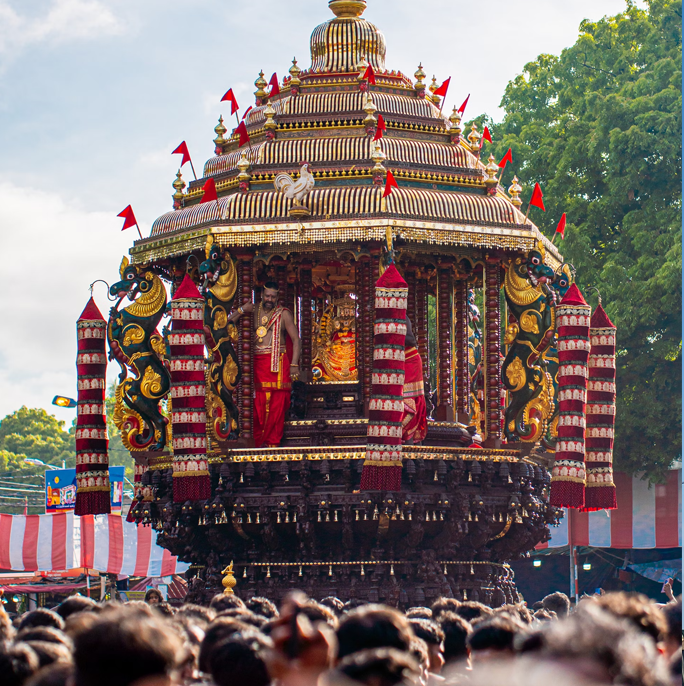
Sri Lanka’s festivals are vibrant, joyous, and deeply rooted in culture. The Kandy Esala Perahera, held in July or August, is one of the grandest spectacles, featuring a procession of traditional dancers, drummers, and elaborately decorated elephants honoring the sacred Tooth Relic.
In April, the Sinhala and Tamil New Year brings the entire island alive with celebrations, traditional games, sweet treats, and family gatherings. Visitors are welcome to join in festivities, try cultural games like pillow-fighting, tug of war and bun eating competitions, and enjoy the warm hospitality of locals. These festivals offer an authentic and fun-filled way to experience Sri Lankan traditions.
Sri Lankan cuisine is a flavorful mix of spices, coconut, and rice-based dishes. Don’t miss local favorites like rice and curry, hoppers, and kottu. Fresh seafood is abundant along the coast. Enjoy tropical fruits and refreshing drinks like king coconut water or spiced Ceylon tea with your meals.
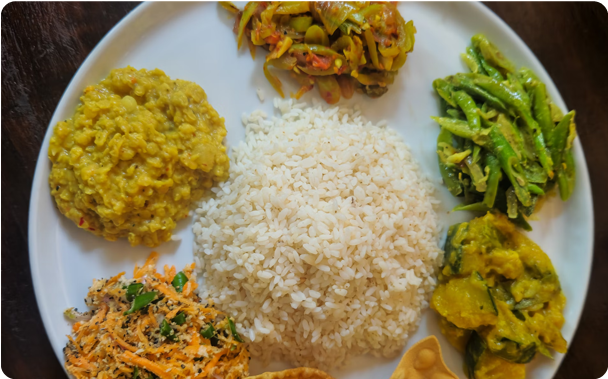
Rice and curry is the heart of Sri Lankan cuisine and a must-try for any visitor. This flavorful meal typically features steamed rice accompanied by an array of curries, including lentils (parippu), vegetables, chicken, fish, or beef.
Each curry is spiced with local ingredients like cinnamon, cardamom, and curry leaves, offering a rich and aromatic experience. Sides like sambol (spicy coconut relish) and papadam enhance the flavors. The dish varies by region, with coastal areas favoring seafood curries while the hill country offers more vegetable-based versions. It’s a daily staple for locals and a delicious cultural experience for tourists.
Where to try: Nuga Gama, Colombo
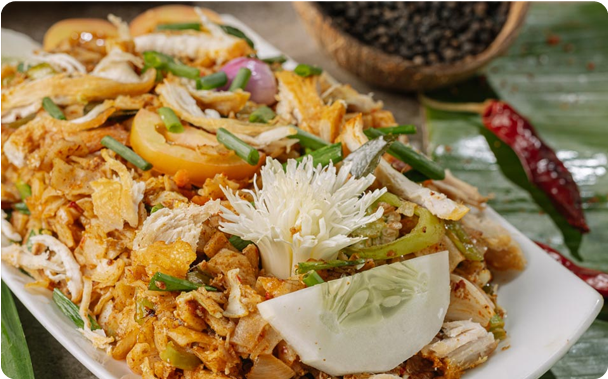
Kottu, or “Kottu Roti,” is one of Sri Lanka’s most iconic and beloved street foods. Made by stir-frying chopped godamba roti (a flatbread) with vegetables, eggs, and your choice of meat, it’s seasoned with aromatic spices and curry sauces.
The dish is prepared on a hot griddle, and the rhythmic clanging of metal blades chopping the roti is a sound you'll hear on almost every street corner. Chicken kottu is the most common, but cheese and vegetarian versions are also popular. Cheap, filling, and bursting with flavor, kottu is a must-have for an authentic local dining experience.
Where to try: Upali's by Nawaloka
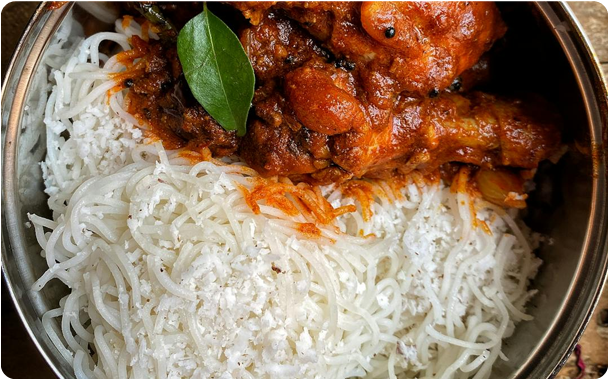
Sri Lankan breakfasts are hearty, flavorful, and unlike anything else. A typical spread includes hoppers (crispy-edged bowl-shaped pancakes), string hoppers (steamed rice noodle nests), and coconut sambol. These are often served with sides like dhal (lentil curry), lunu miris (spicy onion-chili paste), and sometimes a mild fish or chicken curry.
Milk rice (kiribath) is another favorite among the locals, often eaten with jaggery or spicy sambol. Everything is made with fresh ingredients and bold spices, offering the right balance of taste and energy to start your day.
Where to try: Mt Lavinia Hotel, Mount Lavinia
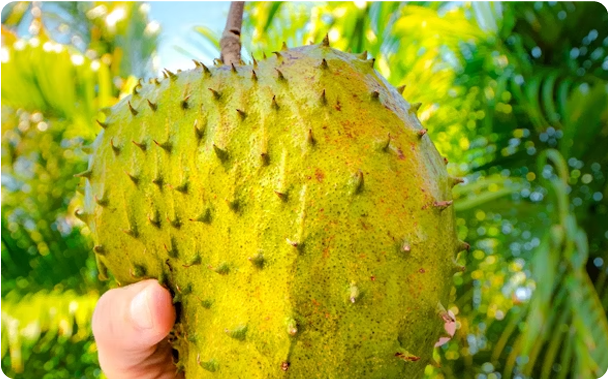
This tropical fruit haven offers unique and exotic flavors that every traveler should try. Woodapple, with its strong aroma and tangy-sweet taste, is often eaten fresh, blended into a refreshing juice or made into a spicy mixture called achcharu.
Soursop is soft, juicy, and mildly acidic, perfect for smoothies or eaten on its own. Other local fruits include rambutan, mangosteen and jackfruit. King coconut is a popular natural drink sold roadside which you need to try on a sunny day. Mangoes, bananas (in several varieties), and pineapples are available year-round. Sample all these fruits to taste Sri Lanka’s rich biodiversity and tropical bounty.
Where to try: Roots, Colombo
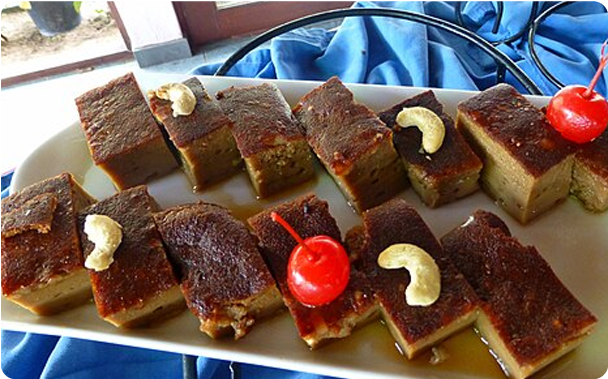
Sri Lankan sweets are a delightful fusion of coconut, jaggery, rice flour, and fragrant spices. Must-tries include kavum (deep-fried rice flour cakes), kokis (crispy, flower-shaped treats), and aluwa (a soft, sweet confection made of rice flour and treacle).
Watalappam, a rich coconut milk and jaggery pudding spiced with cardamom and nutmeg, is a favorite dessert, especially among the Muslim community. These sweets are often enjoyed during festivals, religious celebrations, or as an everyday treat with tea. Sweet, sticky, and bursting with flavor, traditional Sri Lankan desserts are not only a perfect ending to any meal but also provide a true taste of local culture.
